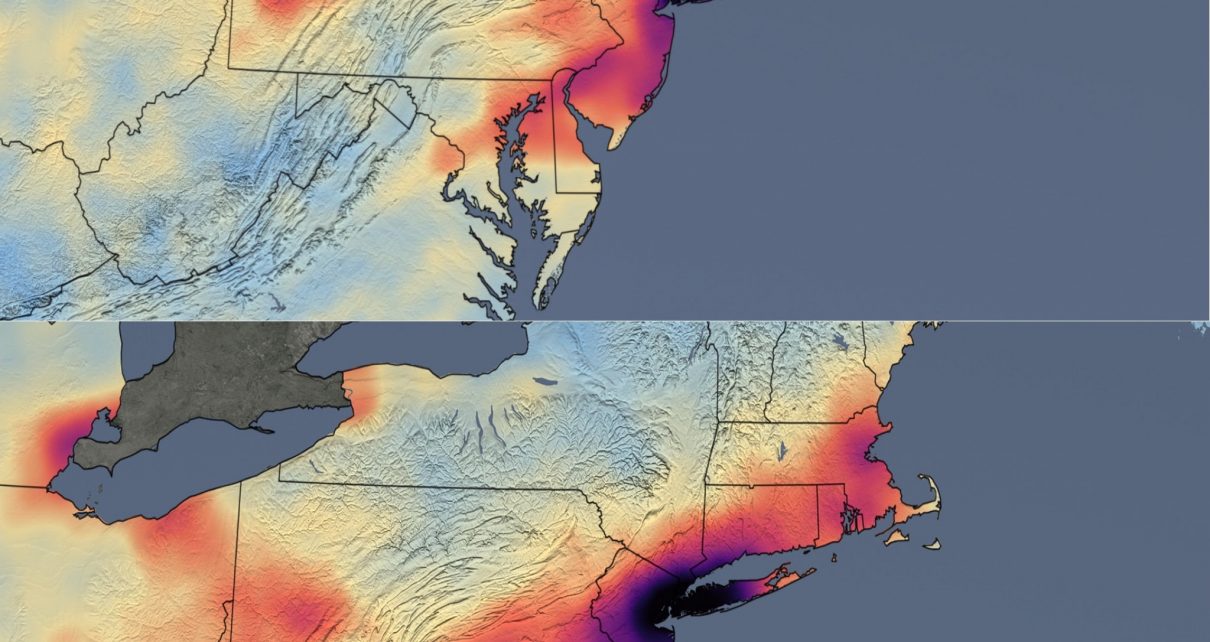As the world scrambles to contain the spread of COVID-19, many economic activities have ground to a halt, leading to marked reductions in air pollution. And with the skies clearing, researchers are getting an unprecedented chance to help answer one of climate science’s thorniest open questions: the impact of atmospheric aerosols. What they learn could improve predictions of the earth’s climatic future. “We hope that this situation—as tragic as it is—can have a positive side for our field,” says aerosol researcher Nicolas Bellouin of the University of Reading in England.
Aerosols are tiny particles and droplets that are emitted into the air by myriad sources—from fossil-fuel burning to fertilizer spraying and even natural phenomena such as sea spray. They alter cloud properties and intercept sunlight, with some scattering solar radiation and others absorbing it. All of these factors influence global temperature—sometimes in competing ways. Overall aerosols have a cooling effect on the climate, offsetting some of the warming caused by greenhouse gases—but just how much they have done so to date, or will do so in the future, remains unclear. The Intergovernmental Panel on Climate Change has estimated that a doubling of atmospheric carbon dioxide concentrations could increase temperatures by anywhere between 1.5 and 4.5 degrees Celsius, with the wide range linked, in part, to scientist’s incomplete understanding of the influence of aerosols. “The fact that the aerosol effect on climate, so far, is so uncertain has held us back,” says atmospheric scientist Trude Storelvmo of the University of Oslo.
Part of the problem in parsing out the role of aerosols has been that their sources could not simply be turned off to compare what happens with and without them. But now the response to the pandemic has effectively done so. Scientists are now jumping at the opportunity to spot the differences in everything from specific cloud properties to changes in local temperatures before and after aerosol emissions dropped. “If this goes on, one pretty damn sure prediction that I can make is that we will see a lot of scientific papers on this in a couple of years,” says atmospheric scientist Bjørn Samset of the Center for International Climate Research in Norway.
One question that Samset, Bellouin and others are hoping to answer is what fraction of aerosols in the atmosphere arise from human activities rather than natural sources. Aerosol emissions vary greatly from place to place, and it is normally difficult to assess their origin based on remote satellite measurements or sparse ground instruments. The current drop, however, could offer information about the background levels of natural aerosols. Earth scientist Drew Shindell of Duke University aims to investigate the relative contributions of different human activities. In China—where some sectors, such as transportation, have shut down more extensively than others, including electricity generation—the mix of aerosols in the air appears to be shifting and could help indicate which activities produce which aerosols. “That’s one thing I find really interesting about the shutdown,” Shindell says.
Aerosols also influence cloud formation, which happens when water droplets condense onto particles. Where more aerosols are present, they can create longer-lasting, more reflective clouds—processes that affect the earth’s temperature but that have been notoriously hard to include in computer models. Storelvmo and other researchers now aim to study cloud patterns in the relative absence of aerosols in order to infer their influence. Comparing these data to simulations of the atmosphere before and after shutdowns “would be a very good test for our models to see if they can reproduce what was observed,” she says. Samset also plans to investigate clouds and hopes to look into the challenging question of how aerosols impact where and how much it rains. For him, he says, finding an answer would be “the holy grail.”
Because clouds are highly variable, just how much scientists can learn may be limited “unless this goes on—God forbid—for a really long time,” Shindell says. But if widespread measures to tackle COVID-19 remain in place for many months, larger-scale climate impacts might be observed. For example, aerosols are believed to influence the strength and location of the annual South Asian monsoon, the seasonal shift in winds that brings heavy rains to the Indian subcontinent. Hundreds of millions of people rely on this rainfall, so any disruption in 2020 could have profound consequences.
Researchers may also spot direct impacts on temperatures. Using computer simulations, Samset and others have previously found that large hypothetical drops in regional aerosol emissions can create localized warming. But aerosols would need to be reduced extensively during the shutdowns for any such spikes to be observable in regional—let alone global—temperatures.
In the past, the closest scientists had gotten to such an unintended experiment on the effects of aerosols came from volcanic eruptions, which can inject huge amounts of these particles into the upper atmosphere and cause cooling worldwide. The grounding of flights over the U.S. after the 9/11 attacks similarly hinted at how water vapor in airplane exhaust can influence cloud properties. But few atmospheric scientists were prepared for the far-reaching aerosol reductions that are now unfolding. “No one would have dreamed of something like this happening,” Storelvmo says. Still, researchers hope it could help illuminate how warming might progress as society emerges from the pandemic shutdowns—and as greenhouse gas and air pollution emissions evolve over the 21st century. As Samset puts it, “This is about understanding the climate risk of the future.”
Read more about the coronavirus outbreak here.

